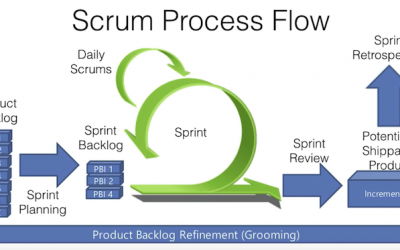A resume or curriculum vitae (CV) is an outline of a person’s educational and professional history.
But it’s more than that. It’s an advertisement. A skillful presentation created to arouse the interest of a prospective employer. Designed to highlight your strengths and capabilities.
Laid out for easy reading, extraction of important data and to show that you are the right person for that job.
Most resumes are boring. A monotonous, matter of fact style of writing is used, listing down dull routine activities, sometimes even starting from primary school!
A well written resume is a living thing, changing with the circumstances, your resume must be written in various formats. Tailored to enhance experience, highlight qualifications, show off your capabilities; depending on your assessment of the employer, the company, the job.
A well presented resume will stand out from the rest, will encourage the prospective employer to read it, will be a pleasure to read and will convince the employer to meet you. It will show your future employer that you can communicate effectively; a much sought after quality.
A successful resume will make the reader sit up and take notice.
Resume Power Phrases and Active Verbs
Power phrases and active verbs are used. It will literally vibrate itself to the top of the pile and shout ‘Read me !’
Resume Preparation
Before you even think about drafting out your resume you need to collect all the information about you. Jobs, accomplishments, responsibilities, dates, qualifications, skills, interests, personal attributes. Write them all down, don’t be shy, brainstorm. Be positive, assertive, enthusiastic. Remember you are selling yourself. Don’t be modest. Be truthful however, or you’ll be caught out in the end.
Resume Format
Then decide on the format you think best fits you and the target job.
No matter how you analyse resumes, they consist of two parts, the chronological part and the functional part. Bias your resume towards the chronological or to the functional depending on the job and how you fit the job.
These guidelines will help you understand how to use the two resume formats.
Chronological Style
The chronological section lists life in date order. Reverse date order. Most recent events first. Emphasise your job history chronologically when;
- Present and past employment in main stream industry
- Staying in the same type of employment
- Job history shows career development and growth
- Previous job titles are impressive
Functional Style
The functional section highlights capabilities, achievements, goals. Focus attention on this section when;
- Job history is erratic, inconsistent
- Changing career goals
- Returning to work after long absence
- In the same job too long
First Impressions Count
Remember first impressions count. Your future employer’s first impressions will be got from your resume. So the layout has to be good. More than good. Memorable. Also remember that once the onerous task of sifting through the mountain of resumes has started, the first filter will be visual. Yes, purely the look of the thing. Even during the second pass, decisions whether to ‘reject’ or ‘consider further’ are based more on presentation than content. Only then is the content analysed and resumes sorted in order of suitability for the job.
Resume Length is Critical
The length of a resume is critical. Two sides of A4 size paper is the optimum. Any shorter and there’s not enough of you. Longer and the will to read it disappears. A three page resume reduces readability by fifty percent. Longer resumes are only written by people who lack self confidence! And two sides of A4 does not mean the same sheet of A4. It means two sheets of A4 each typed on one side only.
Use a standard business type face. Times New Roman or Aerial, twelve point type size. Leave good size margins on both sides. White space is important to the overall look of the document. A well laid out resume is much easier to read and looks more attractive than one crammed full of text.
Resume Layout
On the first page, type your full name, bold, underlined, top, centre justified. Below your name give the all important contact information. Mailing address, telephone numbers. Your email address could impress. On the second page, type your full name, not bold, underlined, top, right justified.
Include page numbers. Page 1 of 2 ; Page 2 of 2. Not bold, not underlined, centre or right justified at bottom of page.
Use same type face as the main text. If you are using a complex word processor, page numbering can be in the ‘footer’ of the document. Please resist the urge to include all other information like date, file name, colour of socks.
Section headings should be bold type, left justified. Paragraph text should be indented. But most of all be consistent.
Minimise the number of sections in your resume. Some suggested section headings are;
- Profile
- Experience
- Accomplishments
- Skills
- Work history
- Qualifications
Start with the strongest statements. Use active verbs like;
- Created
- Completed
- Solved
- Improved
- Organised
- Expanded
Use power words like;
- Controlled
- Reduced
- Increased
- Produced
- Managed
- Implemented
- Negotiated
- Purchased
Keep sentences and paragraphs short. Use indented and ‘bulleted’ lists. Use simple terms rather than complex expressions. Use quantities where they enhance achievements. Only use jargon if it is widely known in the target industry.
Emphasise qualities that employers are looking for;
- Versatile, flexible, mobile
- Customer focused
- Quality oriented
- Multilingual
- Computer literate
- Team worker, self motivated
We have discussed the importance of a well presented resume. We described the two different types of resume, the main sections and we talked about action verbs and power words.
Now we describe layout, style and how to present the completed resume to prospective employers.
Resume Presentation
Choose a higher quality paper than normal photocopy paper, heavier, with a watermark. Colour – White, unless you consider the reader would be interested in something different. Even then a subtle pastel shade. No dramatics at this stage.
Use a professional typewriter or good quality printer. Laser or inkjet. Dot matrix printers are not allowed. Never hand write your CV. No smudges and definitely no correction fluid.
Proof Read Your Resume
After you have completed your first draft you will find that it is too long. So what do you leave out ?
Consider the following;
- Eliminate repetitions – If you have had similar jobs only state the latest
- Condense – One example is sufficient
- Detail recent positions – summarise earlier ones
- Leave out company addresses
- Leave out references
- Shorten sentences
- Leave out information that is implied
- Eliminate unwanted information like height, weight, colour of your other pair of socks
Print it. Proof read it. Correct it, print it; and then get someone else to proof read it. Correct it. Spellcheck it. Print it. Make sure the grammar is sound. Check the capitalisation and the punctuation.
And be consistent.
Cover Letter
The third page of your creation is the cover letter. It is as important as the resume itself, because it is the first that will be read; and as we know, first impressions count.
Use the same typeface, the same paper. One page.
Standard business letter layout. Name, address, contact telephone numbers at the top. Remember the date.
Make reference to the vacancy. Bold type or underline. Express interest in the vacancy, the company.
Say why you feel that you are the right person for the job and request an interview.
Keep it brief and to the point.
Print it, proof read it, get someone else to proof read it. Correct it, spellcheck it. Print it.
Place all three pages in a large envelope. Unfolded preferably and un-stapled definitely.
Address the envelope and send it off.
And there you have, one perfect resume and one better than average chance of an invitation to an interview!
Jeb Riordan
A list of ‘DOs’
- Include your full name on each page
- Include address and contact telephone number
- Spellcheck and proof read
- Get a second opinion before you send it
- Be consistent
- Express enthusiasm, assertiveness, energy
- Emphasise the positive
A list of ‘DO NOTs’
- Do not include ‘I’ – it is implied
- Do not include a photograph – if expressly requested, attach to cover letter
- Do not include height, weight, sex etc.
- Do not highlight negative information – divorce, handicaps
- Do not include hobbies – unless directly related to the job
- Do not tell lies </li><li>Do not use jargon
- Do not list references </li><li>Do not include present or expected salary
- Do not use fancy papers, folders or binders
The most common mistakes include;
- Too long
- Paragraphs and sentences too long
- Too many irrelevancies
- Poorly typed, amateurish, spelling mistakes, poor grammar
- Too exotic, fancy fonts, binders, photographs
- Disorganised
- Misdirected, no connection to vacancy
Good Luck!




